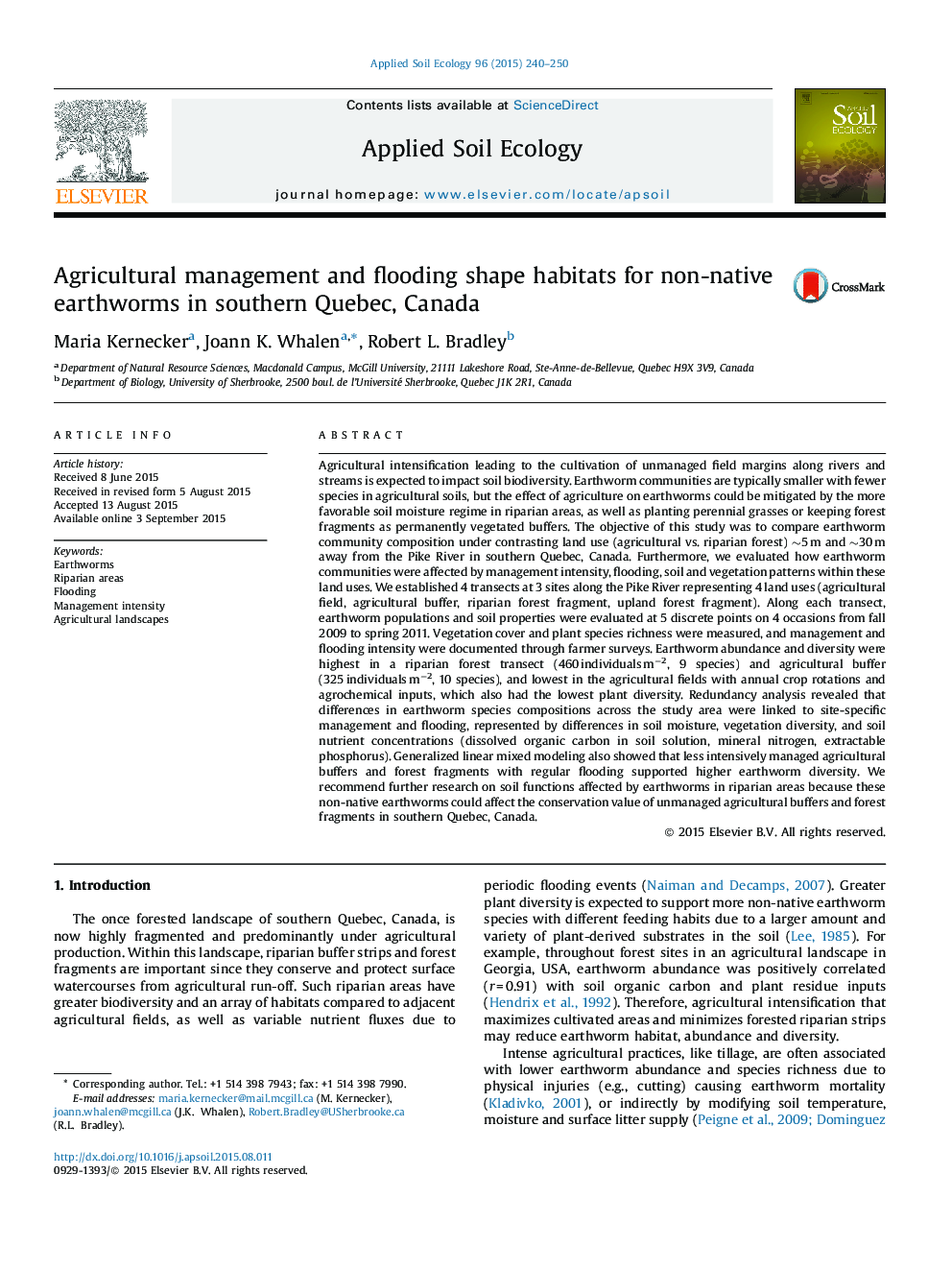| کد مقاله | کد نشریه | سال انتشار | مقاله انگلیسی | نسخه تمام متن |
|---|---|---|---|---|
| 4381916 | 1617787 | 2015 | 11 صفحه PDF | دانلود رایگان |
• Non-native earthworms inhabit riparian areas with agricultural and forest land uses.
• Earthworm species composition differed in habitats 5 m and 30 m away from river.
• Management intensity and flooding shaped earthworm communities within habitats.
• High management intensity reduced earthworm diversity, biomass and abundance.
• Forest fragments with flooding had larger and more diverse earthworm communities.
Agricultural intensification leading to the cultivation of unmanaged field margins along rivers and streams is expected to impact soil biodiversity. Earthworm communities are typically smaller with fewer species in agricultural soils, but the effect of agriculture on earthworms could be mitigated by the more favorable soil moisture regime in riparian areas, as well as planting perennial grasses or keeping forest fragments as permanently vegetated buffers. The objective of this study was to compare earthworm community composition under contrasting land use (agricultural vs. riparian forest) ∼5 m and ∼30 m away from the Pike River in southern Quebec, Canada. Furthermore, we evaluated how earthworm communities were affected by management intensity, flooding, soil and vegetation patterns within these land uses. We established 4 transects at 3 sites along the Pike River representing 4 land uses (agricultural field, agricultural buffer, riparian forest fragment, upland forest fragment). Along each transect, earthworm populations and soil properties were evaluated at 5 discrete points on 4 occasions from fall 2009 to spring 2011. Vegetation cover and plant species richness were measured, and management and flooding intensity were documented through farmer surveys. Earthworm abundance and diversity were highest in a riparian forest transect (460 individuals m−2, 9 species) and agricultural buffer (325 individuals m−2, 10 species), and lowest in the agricultural fields with annual crop rotations and agrochemical inputs, which also had the lowest plant diversity. Redundancy analysis revealed that differences in earthworm species compositions across the study area were linked to site-specific management and flooding, represented by differences in soil moisture, vegetation diversity, and soil nutrient concentrations (dissolved organic carbon in soil solution, mineral nitrogen, extractable phosphorus). Generalized linear mixed modeling also showed that less intensively managed agricultural buffers and forest fragments with regular flooding supported higher earthworm diversity. We recommend further research on soil functions affected by earthworms in riparian areas because these non-native earthworms could affect the conservation value of unmanaged agricultural buffers and forest fragments in southern Quebec, Canada.
Journal: Applied Soil Ecology - Volume 96, November 2015, Pages 240–250
